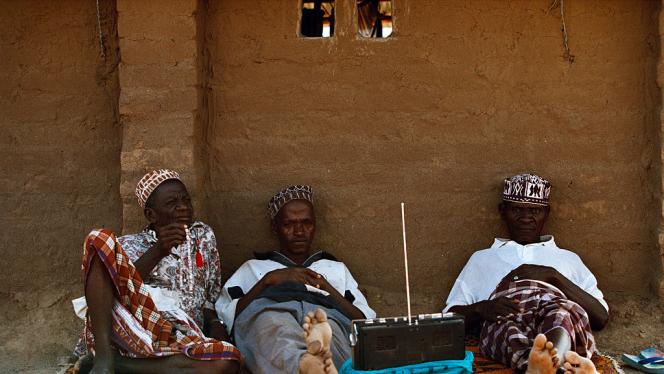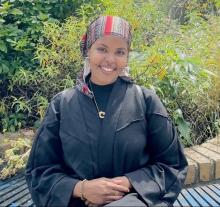Friday 15 November 2024
Can a refugee camp become home?

How does a refugee camp, a transient place between A and B, become a home? Kakuma shows us how.
The movement of people from their homes is not a modern phenomenon. Historically, individuals were forced to leave due to wars, persecution, environmental disasters, ethnic conflicts, and other push factors. In other cases they move due to pull factors like the search for work, unification with family members or even something as simple as a desire to live in a country you like or admire, if you’re privileged enough to be able to do that. The spectacle of Trump’s election in 2016 led to an exodus of Americans packing up and moving to Canada due to their revulsion at the prospect of his presidency. More recently, smaller numbers of western Muslims, frustrated with living in Europe have increasingly moved to Turkey and other Middle Eastern countries they deem more suitable for their lifestyles.
In the world prior to the 20th century, when nation-states had not yet carved up and guarded their borders so jealousy, people moved with relative ease. Today, however, most people face significant bureaucratic and logistical hurdles to migration. This problem is compounded when dealing with populations who have had to leave due to direct threats to their livelihoods and safety.
Since World War II, millions of refugees and asylum seekers have crossed state borders in search of safer homes. As conflicts proliferate and become more complex, the number of displaced people has rapidly increased. In early June, the UN declared that 117 million people were displaced globally (a record high), with 8.8 million added to that figure in 2023 alone. Some of those find “temporary” in camps in neighbouring countries, others are fortunate enough to find permanent homes in different host nations. The prospect of return is often very slim. Generations of Palestinians have grown up in refugee camps in Gaza, Lebanon and Syria. The Dadaab refugee camp in Kenya where many Somalis have resettled is another great example. Kilian Kleinschmidt, a former UNHCR official, has described them as the “cities of tomorrow.”
These temporary holding areas have become home to many people and have profoundly shaped their idea of belongingness. Aamna Mohdin, a British-Somali journalist at the Guardian, traced her journey from the UK back to the refugee camp she grew up in calling it “the homecoming of a refugee” but also “another homecoming – to myself.” Another young man documented his trip from Dadaab to Mogadishu, the home he thought he always wanted but never had, and his eventual return. “My situation has been a journey from fear to freedom,” the author wrote, expressing his gratitude and longing for the peace the camp provides.
For many refugees, 'home' is not confined by borders and is a non-physical concept. Thus, it is crucial to conceptualise the meaning of 'home' and its fundamental components. To understand the complex layers and meanings of home, I will examine how Kakuma camp, in northwest Kenya, became a "home-like" space for thousands of people from different backgrounds. This camp hosts diverse refugee communities from Sudan, DR Congo, Eritrea, Somalia, Rwanda, and Ethiopia. Kakuma camp allowed refugees to amalgamate, recreate, and restructure the concept of home due to their resettlement journey, history, and the services provided at the camp.
Kakuma as “homemaking”
Kakuma is a Kiswahili word. “Ka (a)” means “to sit (on)” while “Kuma” means “a virgin’s or young girl’s vagina”. The literal meaning of this word in Kiswahili is “sitting on virgin territory’’. Kakuma is a part of the Turkana region, and this part of Kenya is an area associated with foreign, strange, violent, and uninhabitable areas due to its harsh climate conditions.
To many Kenyans, life and social development were not possible in this area before creating the camp since the region has a semi-arid climate. For that reason, Kakuma became “a new place, grown out of blank humanitarian space, and created, contested, negotiated, organised and given meaning by refugees, Kenyans, and humanitarians”, writes Bram Jansen. Thus, a previously unknown empty desert associated with violence became a ‘home-making’ and humanitarian assistance space for many refugees across east Africa.
Kakuma camp was established in 1992 in the north-western region of Kenya. It was created when the “Lost Boys of Sudan” arrived from Ethiopia and Sudan during the Second Sudanese Civil War (1987-2005). The Lost Boys of Sudan were 25,000 Sudanese boys heavily affected by the conflict. Many of these young boys were orphaned as their parents were killed during the war, and they eventually made their way southeast. The war resulted in approximately 2.5 million deaths, prompting a significant Sudanese population to migrate to neighbouring countries in search of safety and better opportunities.
Since its establishment, Kakuma has provided a home for many refugees displaced by the ongoing political turmoil in several Horn of Africa nations. In his book The Accidental City, Jansen states: “The governments of Somalia and Ethiopia were overthrown after years of civil war, and in the Great Lakes region, Rwanda, Burundi, the DR Congo, and Uganda simultaneously experienced a variety of rebel wars and localised conflicts that increasingly led to refugee movements as the 1990s progressed.”
As a result, Kenya became a significant refugee hub, which led UNHCR to establish the Kakuma refugee camp with the negotiations of the Kenyan government. Jansen argues in his book: “... [the] empty desert was turned into humanitarian space, and now rests uneasy between a humanitarian construction and people 'making place’ and settling down”. Hence, Kakuma has become a constructive and imaginary home to many diverse people, not just a transient conduit, before more permanent resettlement.
Currently, the camp is home to about 252,000 people from eighteen nationalities, according to UNHCR. And it has become a vital home space that promotes refugee resiliency, entrepreneurship, and collective healing. Refugees living in Kakuma Camp share common experiences: the loss of home, homelessness, and trauma. The stories of loss, grief, and belonging have driven refugees to collectively make Kakuma their new homeland or a home-like county. The commonality of their experiences and refugee journeys enables them to create new identities and a sense of belonging. Thus, the concept of home is not physically located, but rather shaped by the identities and experiences of individuals. Kakuma has become a unified home where refugees share collective memories and a history of displacement. Ethnic conflicts and the political rule of ruthless authoritarian leaders destroyed their original homes, and for some, returning home might not be possible anytime soon. Therefore, establishing a new home and collective identity at Kakuma was inevitable. Additionally, being in Kakuma and feeling a sense of security and belonging has given the refugees new hope to re-establish themselves and move forward.
Kakuma is managed by the United Nations High Commissioner for Refugees (UNHCR), and it has identified three durable solutions to control the growing refugee crisis. The three durable solutions are the following: “voluntary repatriation, local integration, and resettlement, or ‘the transfer of refugees from a State in which they have sought protection to a third State which has agreed to admit them “as refugees” with permanent residence status”. Some don’t wait and make their own way out as Aamna Mohdin’s story recounts. Her mother told her she left Kakuma because “she found herself unable to keep waiting for our lives to begin”. “I was growing up quickly and she didn’t want me to be one of the young people who would spend their entire lives there,” she writes.
Not everyone takes this risk though and with hardened borders and less welcoming attitudes to refugees the risks are greater. With the support of UNHCR, Kakuma has become home for many refugees, as the camp shapes their lives. Proximity to home became an essential concept for the refugees as some continued to live in the camp for almost thirty years. For some, their children only know Kakuma as their ‘original home’. Dahabo Kerow’s poem, Where Are You From?, explored this experience, boldly declaring: “I am from a place that was home to many. A place openly known as Kakuma but privately, within my mind, called a heaven on Earth. The place where I encountered the world.”
Kakuma shaped the early childhood experience of many children, and it allowed them to view themselves as one family beyond nationality, cultural, and religious lines.
Semi-sovereign state
In Kenya, land and refugee integration are sensitive topics. Formerly, the Kenyan government was reluctant to allow refugees to settle or relocate in Kenya. The government feared that refugees “might become settled in valuable areas of the country, especially in the highlands.”
As a result, the government in Nairobi permitted refugees to settle in underpopulated areas with a semi-arid climate. This region was not a priority for the Kenyan state due to its limited agricultural potential. Additionally, the UNHCR negotiated with the government, promising to manage and fund the refugee camps within Kenya.
Government leaders did not intend for refugees to become permanent settlers but envisioned Kenya as a transit state for refugees. While many refugees aimed to reach industrialised countries, the sheer number of arrivals prevented most from travelling abroad. Consequently, Kakuma became their permanent home and the only viable option available. Even for those who managed to travel to the west, Kakuma remained their home in their hearts. Kakuma became a home to many local refugees and the diaspora, a place where they shared collective memories as families and communities who were victims of displacement and ongoing conflicts. The gloominess, dust, and challenging living conditions of Kakuma did not diminish its home-like qualities in the memories and hearts of refugees.
For many Somalis and Sudanese in the diaspora, visiting Kakuma and helping the local population have become primary goals. Kakuma evolved into a virtual city as political, cultural, and social dynamics emerged within the camp. This rapid social development and refugee resilience programmes alarmed the Kenyan government. Initially, the government isolated the camps in a semi-arid region, but many refugees managed to overcome the harsh conditions by expanding their trading skills and participation in the labour market. This growing economic activity attracted native Kenyans to settle in the refugee camps, as the UNHCR continued to provide free access to water and other services to the local communities. However, clashes between Kenyans and refugees remained inevitable. According to the refugees, they have built this town, and it is their homeland. They did not want local Kenyans to treat them as foreigners just because they lack Kenyan nationality. For them, Kakuma is their home.








